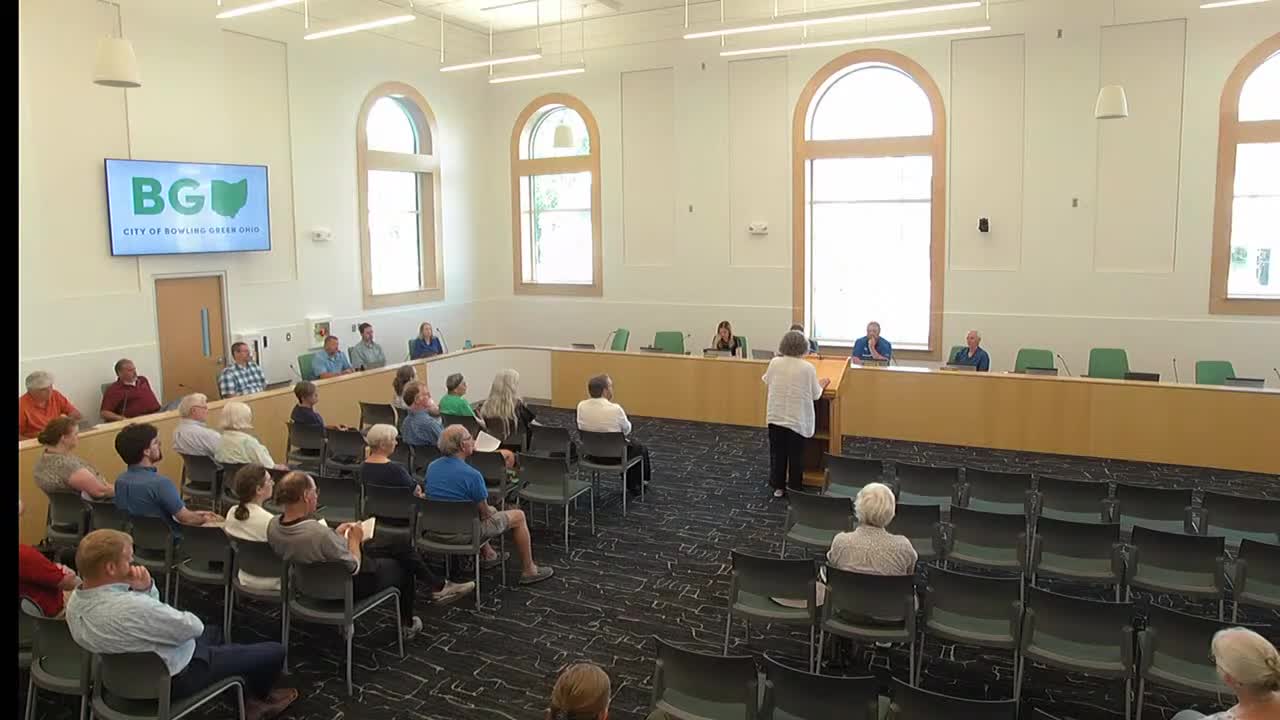Bowling Green community advocates ending solar surcharge at Public Utilities Board meeting
June 24, 2025 | Bowling Green, Wood County, Ohio
Thanks to https://workplace-ai.com/ , all articles about Ohio are free for you to enjoy throughout 2025!

This article was created by AI using a video recording of the meeting. It summarizes the key points discussed, but for full details and context, please refer to the video of the full meeting. Link to Full Meeting
One of the key discussions centered around the integration of distributed rooftop solar systems paired with battery storage. These systems, owned by residents and supported by grants from the nonprofit Solar United Neighbors, are seen as a way to enhance the city’s resilience against environmental threats. The concept of a virtual power plant emerged as a promising solution, allowing communities to harness renewable energy effectively.
The conversation also highlighted the potential of Sustainable Energy Utilities (SEUs) to assist residents in reducing energy consumption and obtaining rebates. By creating microgrids that utilize solar and geothermal power, the city could prevent widespread power failures, drawing inspiration from neighboring Ann Arbor’s successful initiatives.
A significant point raised during the meeting was the city’s recent Climate Action and Resiliency Improvement Plan, which aims to repurpose abandoned industrial sites for community solar arrays. This strategy not only addresses urban flooding and heat waves but also promotes long-term sustainability in Bowling Green.
However, the meeting took a more contentious turn when resident Joe DeMar urged the Board to reconsider the electric facilities charge imposed on solar panel owners. Introduced four years ago, this surcharge of $4 per installed kilowatt per month was intended to offset perceived revenue losses from homeowners generating their own electricity. DeMar argued that the landscape has changed significantly since then, with advancements in solar technology and a growing commitment to renewable energy.
He pointed out that the city’s current pricing structure for solar-generated electricity is less favorable than the average costs from other suppliers, suggesting that the city profits more from buying excess solar power at a lower rate and reselling it at retail prices. DeMar’s analysis indicated that the financial benefits of solar energy for the city far outweigh the losses from delivery revenue, making a compelling case for the removal of the surcharge.
As the meeting concluded, the discussions underscored a community eager to embrace renewable energy solutions while navigating the complexities of existing policies. The Board of Public Utilities faces a critical decision that could shape the future of energy in Bowling Green, reflecting a broader movement towards sustainability and resilience in the face of climate challenges. The path forward remains uncertain, but the commitment to exploring innovative energy solutions is clear.
Converted from Board of Public Utilities Meeting - 6/23/2025 meeting on June 24, 2025
Link to Full Meeting
Comments
View full meeting
This article is based on a recent meeting—watch the full video and explore the complete transcript for deeper insights into the discussion.
View full meeting